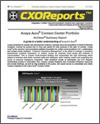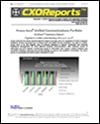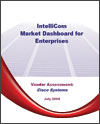April 04, 2012
Shipment of LTE Small Cells to Surpass LTE Macro Base Stations in 2014, says ABI Research

Small Cells can be referred to as “low-powered radio access nodes that operate in licensed and unlicensed spectrum that have a range of 10 meter to 200 meters, compared to a mobile macrocell which might have a range of a few kilometers.”
Small cells, which include microcells, femtocells and picocells, are vital to 3G data offloading as well as managing LTE (News - Alert) Advanced spectrum more efficiently compared to using just macrocells.
In a recent research report on small cells, The LTE Base Station Market, ABI Research said that changing cellular network paradigms cause major shifts in the architecture of base stations from traditional macrocells to distributed base stations and toward the growing use of small cell base stations.
The number of LTE small cells sold (127,000) will surpass the number of LTE macrocells, forecasted at 113,000, as early as 2014. Despite these, LTE base station revenues will continue to be dominated by macro base station revenue with small cell revenue of $1.09 billion representing only 5.2 percent of the total revenue of $20.86 billion in 2014 and growing to $4.44 billion or 23.9 percent of the total $18.60 billion LTE base station market by 2016.
The demand for small cells is mainly driven by increasing data traffic demand as well as the OPEX (News - Alert) and CAPEX cost savings realized in the deployment of small cell equipment. Initially, small cell equipment deployment will be carried out in the form of fills in pico and microcell layers, but will be soon transitioned to become a fundamental part of a network rollout.
The market is active with leading equipment manufacturers launching major initiatives to respond to this shift in RAN architecture. The equipment vendor acquired BelAir networks as part of its “HetNet” initiative. In another significant move in this regard, Nokia Siemens (News
Joining the equipment vendors are leading semiconductor suppliers like TI, Freescale (News - Alert), Cavium, Mindspeed, and DesignArt which offer new “base station-on-a-chip” SoCs.
“This mobile broadband-driven data storm is stretching traditional macrocell network capacity to the limit and driving the move to heterogeneous networks,” said Nick Marshall, principal analyst, networks, ABI Research, in a statement.
Earlier this year, ABI Research said Ubiquisys, a provider of intelligent 3G femtocells, has been ranked No.1 in its latest 2012 Indoor Small Cell Vendor Matrix. Alcatel-lucent and Huawei (News - Alert) claimed the second and third position.
Edited by Stefanie Mosca














